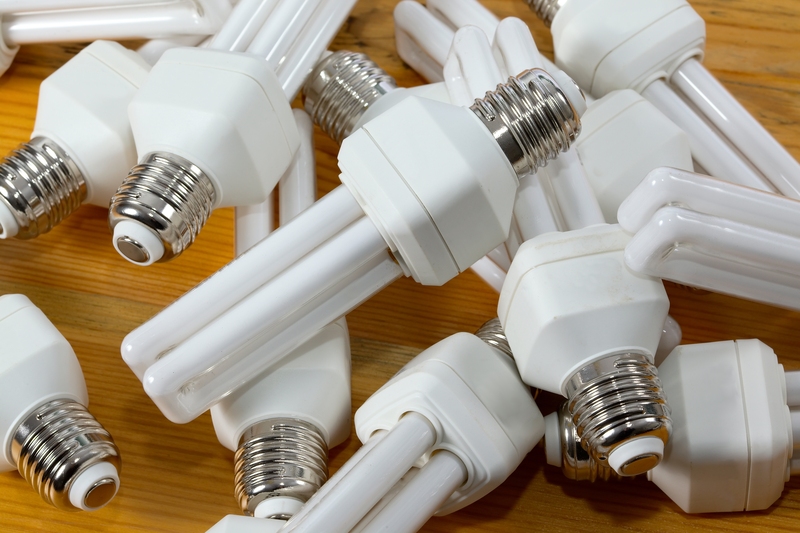The Ultimate Guide to Safely Disposing of Your PPE
With the increased use of Personal Protective Equipment (PPE) across industries and even in everyday life due to public health concerns, knowing how to dispose of PPE safely has never been more critical. Whether you are part of the healthcare sector, work in construction, or simply wear masks and gloves in public, understanding the ins and outs of PPE waste disposal is vital for both environmental and public health. In this comprehensive guide, you'll find everything you need to know about safely disposing your PPE, from understanding the different types of PPE, to following proper disposal procedures and best practices.
What is PPE and Why Safe Disposal Matters
Personal Protective Equipment (PPE) refers to all wearable gear that protects individuals from hazards. Some common examples include:
- Masks (surgical, N95, cloth masks)
- Gloves (latex, nitrile, vinyl)
- Face shields
- Protective gowns or coveralls
- Shoe covers
- Goggles or safety glasses
Safe disposal of PPE is essential for a number of reasons:
- Prevents the spread of infectious diseases, including COVID-19 and other pathogens.
- Protects sanitation workers and the public from potential contaminants.
- Reduces environmental pollution caused by improper PPE waste disposal, especially plastic pollution in oceans and landfills.
- Meets legal and regulatory requirements, particularly for medical and hazardous waste.

Types of PPE and Their Impact on Disposal Methods
Understanding the type of PPE you are disposing of is the first step towards safe and correct PPE disposal. Different items may need different handling based on their materials, contamination level, and regulatory guidelines.
1. Disposable Masks and Respirators
- Usually made from multiple layers of plastic-based materials like polypropylene.
- Intended for single use; should never be reused after contamination.
Key Disposal Tip: Place in a closed bag before discarding with regular solid waste, unless contaminated with hazardous material.
2. Reusable Masks
- Cloth masks can often be laundered and reused.
- Should be disposed of if damaged, torn, or heavily soiled.
If disposing, treat as regular waste unless contaminated, then follow local biohazard protocols.
3. Gloves
- Used in healthcare, food service, cleaning, and public protection.
- Made of latex, nitrile, or vinyl--often non-recyclable in most curbside programs.
Disposal Advice: Remove without touching the outside and discard in a sealed bag in general waste. If used in a medical setting, follow biohazard disposal procedures.
4. Goggles, Face Shields, and Other Reusables
- Usually disinfected and reused as much as possible.
- Dispose of only if broken or heavily contaminated.
Check local recycling guidelines for plastics before discarding these items.
General Guidelines for Safe PPE Disposal
Proper PPE disposal procedures help minimize the risk of contamination. Follow these general steps for most commonly used PPE:
- Remove PPE carefully, avoiding contact with the outside surfaces.
- Place used PPE directly into a lined, leak-proof trash can. Do not leave discarded PPE in public places.
- Seal the bag tightly before placing it in household trash. For workplaces, use designated PPE disposal bins.
- Wash your hands thoroughly with soap and water (or use hand sanitizer) after handling used PPE.
Remember: Never flush PPE down the toilet or sink. This can cause major plumbing issues and environmental damage.
Special Cases: Medical and Contaminated PPE
PPE used in medical, dental, or laboratory settings could be contaminated with hazardous materials. In such cases:
- Follow OSHA and CDC guidelines for biohazard waste disposal.
- Use clearly marked biohazard bags and containers.
- PPE should be incinerated or processed via approved hazardous waste management facilities.
How to Dispose of PPE at Home: Step-by-Step
Everyday individuals wearing masks or gloves outside can follow these steps for safer home PPE waste disposal:
- Take off one glove by pinching at the wrist and turning it inside out.
- Hold the removed glove in your gloved hand and slide fingers under the wrist of the remaining glove to pull it off without touching the outside.
- Fold used gloves and mask into a small ball, if possible, without touching the contaminated side.
- Place in a dedicated bag or container. Knot or tie the bag securely before throwing it in the trash.
- Wash your hands thoroughly for at least 20 seconds.
Key Point: If caring for someone in isolation, double-bag the PPE waste and store it for 72 hours before putting it out for collection. Always check local waste management advisories for updated rules.
Environmental Impacts of Improper PPE Waste Disposal
The surge in PPE use has resulted in a dramatic increase in plastic waste. Improper PPE disposal has led to:
- Increased litter on streets, parks, and beaches.
- Threats to marine and animal life through ingestion or entanglement.
- Clogging of drainage systems and pollution of water bodies.
Since most PPE is made from non-biodegradable materials, safe and responsible disposal is crucial to limit long-term damage to ecosystems.
Can PPE be Recycled?
Most disposable PPE (like masks and gloves) cannot be recycled through standard curbside programs due to contamination and material composition.
However:
- Some specialized PPE recycling programs are emerging. Research local options or mail-back service providers.
- Certain components of reusable PPE (like plastic face shields) may be recyclable if cleaned, but always double check with local facilities first.
Do not put used masks, gloves, or contaminated PPE into the recycling bin unless specifically instructed by your local waste authority.
Workplace PPE Disposal Protocols
Workplaces that require regular use of personal protective equipment should establish robust PPE waste management policies.
Key Steps for Employers:
- Provide readily accessible PPE disposal bins that are clearly labeled and leak-proof.
- Train employees on the correct procedure to remove and discard PPE to avoid cross-contamination.
- Coordinate with certified hazardous waste disposal companies for medical or high-risk waste.
- Regularly disinfect waste bins and surrounding areas.
- Communicate the importance of not reusing single-use PPE.
Tip: Conduct regular audits to ensure PPE waste isn't being mixed with recyclables or regular office waste.
Legal and Regulatory Aspects of PPE Waste Disposal
Regulations may vary by country, state, or even city, but some common requirements include:
- Segregation of hazardous and non-hazardous waste streams.
- Use of biohazard-labeled containers for medical settings.
- Mandatory training for employees handling hazardous waste.
- Proper documentation and tracking of hazardous PPE waste disposal.
Consult your local Environmental Protection Agency (EPA), OSHA, or equivalent body for the latest guidance.
PPE Disposal and Community Health
Improper PPE disposal has been linked to surges in litter and potential viral transmission, especially in public spaces. Community-wide approaches help:
- Lower the public health risk by containing infectious waste.
- Keep public spaces clean and accessible.
- Reduce stigma or anxiety about discarded PPE in neighborhoods.
Many cities have increased the number of public PPE waste bins and run awareness campaigns encouraging responsible behavior.
Best Practices: Summary Checklist for Safe PPE Waste Disposal
- Always remove PPE carefully, minimizing contact with potentially contaminated surfaces.
- Place all used PPE in a securely tied or sealed bag before disposing in the trash.
- Follow workplace, healthcare, or local public health guidelines for specialized waste streams.
- Never leave PPE as litter or flush down toilets or drains.
- Consider reusable PPE where appropriate to reduce overall waste.
- Regularly check for updates from waste management authorities.

Innovative Solutions and the Future of PPE Waste Disposal
With the climate and plastic waste crisis, researchers and organizations are developing:
- Biodegradable PPE products made from natural fibers.
- Collection schemes in hospitals, schools, and communities for specialized PPE recycling.
- Public education programs to improve PPE disposal awareness.
As technology evolves, more sustainable and scalable PPE waste solutions are expected to become mainstream.
Conclusion: Do Your Part in Safe PPE Disposal
Safe and responsible PPE disposal is vital to protect public health and the planet. Whether at home, at work, or in public spaces, following correct PPE waste disposal practices is a collective responsibility. Be proactive, follow local guidelines, and encourage others to do the same. By staying informed, you are helping to build a cleaner, safer, and healthier environment for everyone.
Remember: Proper PPE disposal isn't just a personal choice--it's a social necessity. Stay safe. Act responsibly. Dispose of PPE the right way.
